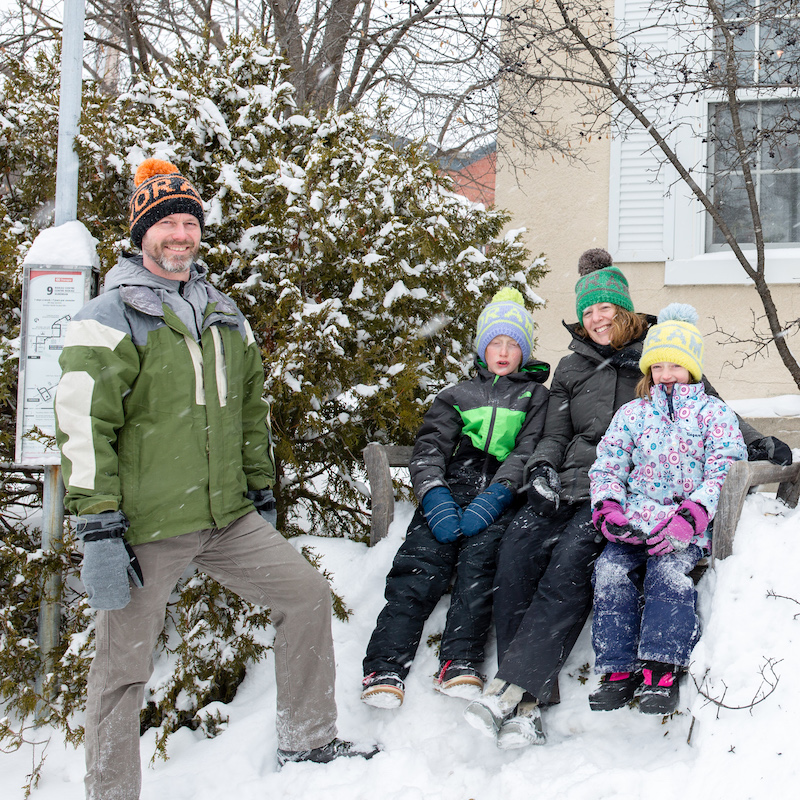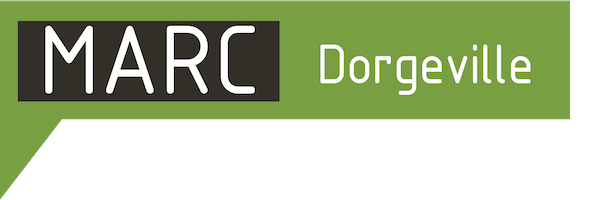
Building Better Neighbourhoods
Building better neighbourhood is a slow process that cities can influence by setting the right conditions to increase positive interactions between people.
After moving in the ward in 2011, my wife and I started to feel that we belonged to the community once we began bumping into people in the neighbourhood that we had met in various settings (daycare, work, school, activities…). Key to this bumping process was to be in places where other people from the community were also going.
And it starts where you shop, because we all need to get out and run errands.* When you shop, you are much more likely to meet neighbours on the sidewalk in front of a local store than in the parking lot of a big box store or a large supermarket. Having as many local businesses as possible is therefore essential to building vibrant communities.
As city councillor, I will support current and future local businesses for them to stay competitive in our neighbourhoods. The city must work to remove as many barriers to their success as possible
- by continuing to simplify the administrative system and working with local business associations to provide new businesses with help right from the start;
- by planning for new developments on busy commercial streets to include store locations with rent affordable for small businesses
- either through direct subsidy from the city (which can be complex to administer, but necessary)
- or with limits to the size of store fronts in accordance with the neighbourhood character as allowed by the Planning Act;
- by providing residents with access to local businesses, notably with convenient public transport or enough car parking nearby, through detailed impact studies of circulation and consumer behaviour.
Other activities in the neighbourhoods also create the conditions for this random bumping process. With young children, our local social network first expanded through daycares then schools, but it would have stayed rather child-centred without other activities in parks, city facilities and cultural events. Drawing people out of their homes is an essential part of building engaged communities.
As a city councillor, I will champion activities and events that get people together:
- by supporting the tremendous work of community associations where they already exist or by actively helping their revival in neighbourhoods where they have become dormant;
- by taking a leadership role in the promotion of local cultural events and activities for all ages in city facilities
- for instance, city spending to create and revitalize neighbourhood parks is important, but a little spending for activities to bring people to the park is essential for community building.
The random bumping process obviously can only happen when people are on the move. It occurs sometimes in your car, when flashing your lights to a friend driving in the other direction or honking to an acquaintance walking on the sidewalk who then waves back. However, interactions from a car are short-lived and rarely provide the opportunity to meet new people. On the contrary, with public or active transportation, bumping into somebody always leads to longer more fulfilling interactions. For instance: when you stop walking for a quick chat with a neighbour, when you sit in the bus with a colleague on your way to work, or when you start talking with another cyclist while waiting at a red light. Because there is a bus stop in front of my house, our family has struck up conversations with many neighbours while they wait for the bus!
As a city councillor, I will always encourage public and active transportation. The city must work to remove as many barriers as possible to their accessibility
- by designing neighbourhood circulation and snow removal with the safety of the most vulnerable users in mind: the pedestrians
- by making transit reliable and affordable for everyone, to counterbalance the inherent inconvenience of waiting for a bus
- by developing cycling infrastructure that is comfortable for all, not just for the already-committed cyclist
- by making sure that residents who do not have other choices other than to rely on their cars, can also continue to get around with a minimum of fuss and find parking as needed.
This last point might surprise some because of my stance on the importance of public and active transportation. However, long lasting sustainable change can only come when all neighbours are on board. Nobody should be left behind - we need to change together.
Marc
Marc Dorgeville
post format
